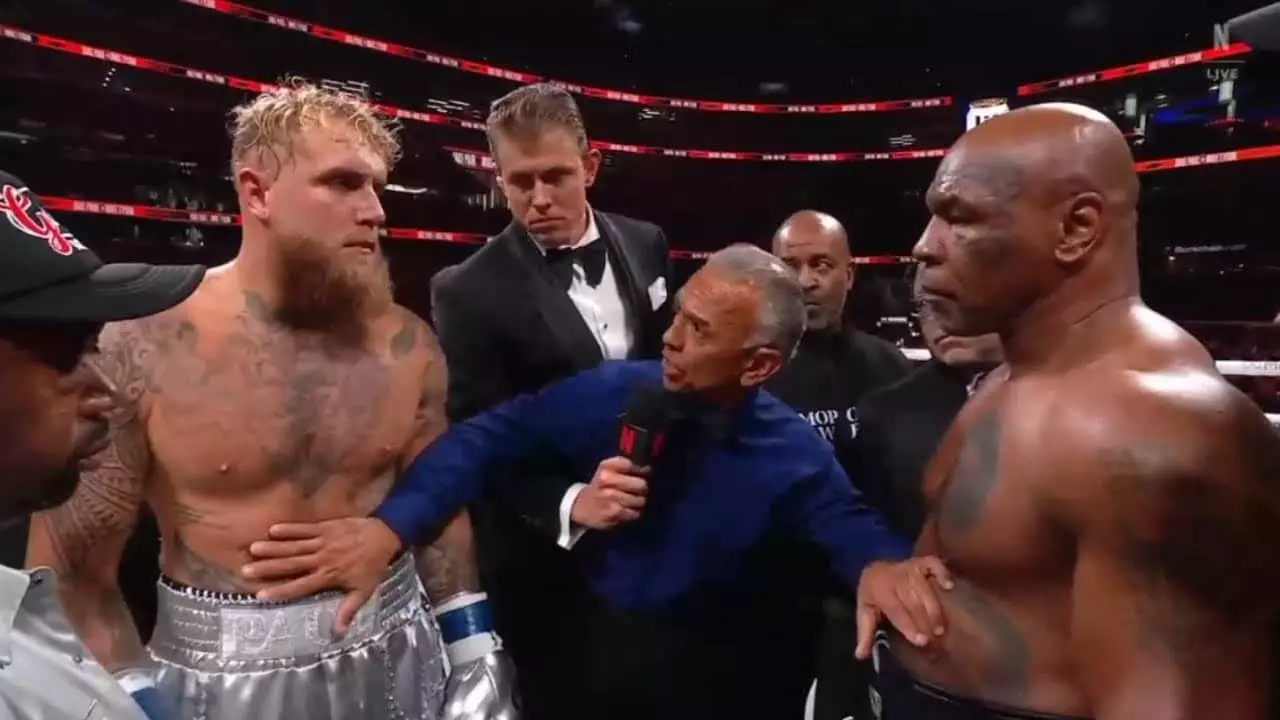Boxing has long been celebrated not only for its physical prowess but also for the charisma of its stars. Legends like Muhammad Ali, Mike Tyson, and contemporary titans such as Floyd Mayweather and Canelo Alvarez have shaped the sport’s identity, making it a cultural phenomenon. However, in today’s fast-paced entertainment climate, boxing faces significant challenges that threaten its prominence. While marquee matchups still draw crowds, the sport risks fading into obscurity due to its stars’ sporadic activity and the overwhelming competition from various entertainment avenues.
The Competitive Landscape: A Battle for Attention
In an era defined by an abundance of entertainment options—including mixed martial arts (MMA), basketball, football, and a plethora of streaming services—boxing finds itself vying not just for sports enthusiasts but for a broader audience segment whose attention can easily shift. This reality amplifies the urgency for boxing to maintain its relevance. Unlike boxing, the UFC effectively retains audience engagement by implementing a robust calendar of events that keeps its fighters in the limelight year-round. The contrast is stark; as fighters like Conor McGregor and Israel Adesanya consistently feature in well-promoted events, boxing champions often go months, if not years, without stepping into the ring. This inconsistency can lead to fans drifting away to explore other interests.
The recent exhibition match between Tyson Fury and Francis Ngannou, along with the high-profile bouts involving celebrities like Jake Paul, emphasizes the shifting dynamics in boxing. Fury and Paul may represent disparate skill levels and backgrounds, but both demonstrate the ability to generate substantial public interest. These ‘event fights’ may create temporary excitement, yet they do not address the underlying problem: a lack of regular, engaging competition among boxing’s elite.
Beyond Star Power: A Need for Consistency
When boxing’s best athletes do perform, the results can be thrilling and memorable. The recent showdown between Gervonta Davis and Ryan Garcia exemplifies how high-stakes matchups can captivate audiences, successfully translating into significant pay-per-view sales and packed arenas. However, these instances remain infrequent, creating a concerning trend where boxing stars risk becoming mere seasonal attractions. The case of Terence Crawford, whose explosive victory over Errol Spence fueled anticipation for future bouts, further underscores the potential of boxing to provide compelling narratives—but this potential is frequently stunted by inactivity.
Moreover, Canelo Alvarez, undeniably the sport’s most prominent current figure, faces difficulties in securing fights that can excite both die-hard fans and casual onlookers. A more dynamic approach is warranted—boxing needs its champions to be dynamic presences who actively engage with their fan base rather than waiting extended periods between fights.
While many established boxing figures dismiss Jake Paul as a mere spectacle, his rise within the sport reveals important lessons about engaging contemporary audiences. Paul’s affinity for social media and his willingness to fight regularly, regardless of the skill sets displayed, have allowed him to cultivate a substantial following. He has succeeded in attracting a younger demographic to boxing—a demographic that traditional fighters often overlook.
What boxing needs is an adoption of a similar engagement model. Stars like Crawford and Davis should look to sustain fan interest through their social media presence, engaging storytelling, and promotional appearances in between fights. By harnessing the tools that modern media offers, they can showcase their personalities and cultivate loyalty among their fanbases, enhancing their visibility and relevance.
To restore boxing’s place in the sports universe, fighters must engage in more frequent, meaningful bouts against compelling opponents. This approach necessitates taking risks, such as embracing cross-promotional fights, rather than methodically waiting to optimize profitability through matchup ‘marination.’ The delayed bout between Crawford and Spence—a fight that ultimately lived up to the hype—was frustrating for fans who had waited years for its fruition. Tackling these matchups with urgency can invigorate the sport, ensuring entertainment remains top-of-mind for fans.
Furthermore, a regular presence of elite fighters not only helps to elevate the sport but also provides younger talent on undercards the opportunity to shine, contributing to the sport’s overall vitality. By building a robust calendar of events across different venues and markets, boxing can emerge as a consistent provider of high-caliber contests.
Boxing is equipped with the talent, history, and narratives necessary for success. However, its stars must rise to the occasion by committing to more consistent participation and strategic promotions. Gervonta Davis, Terence Crawford, and Canelo Alvarez, among others, must embrace their roles not merely as world-class athletes but as entertainers who are integral to the sport’s cultural impact.
In a world where countless distractions vie for attention, boxing’s stars need to champion the sport’s future by embracing activity, prioritizing significant matchups, and engaging effectively with their fanbases. With such efforts, boxing can reclaim its status, flourishing in the current sports arena rather than merely surviving.

